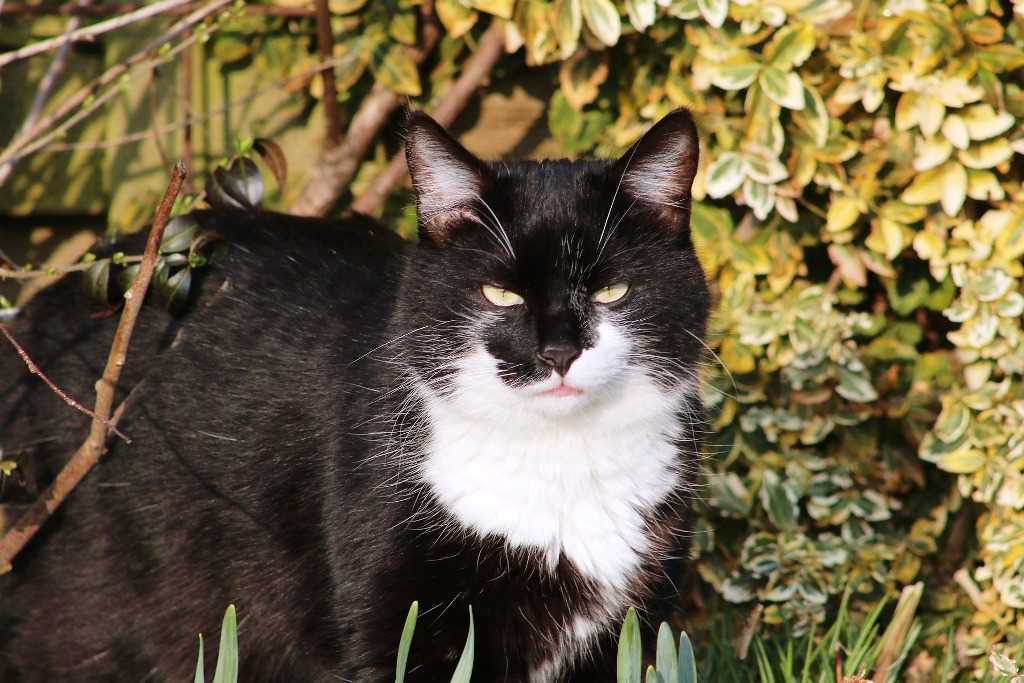The Isle of Man Cat is none other than a Cymric Cat with a short coat. They have the same origin, the Isle of Man which is an island in the Irish Sea where these cats, given the remoteness of this island from the mainland, have crossed spontaneously without any interference of other breeds giving birth to two species of cats that have the main feature to be completely tail-less or with a small butt of tail not longer than a few inches.
In ancient times have been found specimens of this species in Malaysia, Russia and China and it is thought that it is possible that they reached the Isle of Man with the ships coming from the Far East. But given the geographical isolation and the scarcity of domestic cats, the gene related to the absence of tail was preserved and spread on the island.
There are many legends about the origin of these cats, all very picturesque. In one of them it is told that when Noah was ready to set sail with the ark, this late cat climbed aboard at the last moment and his tail got stuck in the door so that from then on it never grew back. In another one it is said that the warriors of the Isle of Man cut off the tail of a kitten at every victory, tails which they then put on their helmets as a sign of glory and good luck. All legends without any foundation.
Character of the Isle of Man Cat
The character of the Isle of Man Cat is identical to that of the Cymric Cat as they are the usual breed, one with short hair and one with long hair, so I write here what I wrote about the Cymric Cat.
The Cymric Cat is a quiet, peaceful and very sociable cat. He gets along well with almost everyone, both with other animals and with children and elderly people. It is very intelligent, it learns easily and can even learn a few things independently.
He doesn’t like to be alone for long periods, so if you have to leave him alone for most of the day, it would be good to get him a companion, another cat or even a dog. It also gets along well with large dogs. He loves to play, for this reason he is also suitable for families with children, with whom he shows a lot of patience. It is able to evaluate the various situations at the specific moment, demonstrating that it is a truly fearless cat.
It is a lively cat who loves to play, run, climb and is also an excellent hunter, but does not disdain the comfort and warmth of home, behaving as a docile and quiet cat.
Appearance of the Isle of Man Cat
The Isle of Man cat is a medium-sized feline; the male cat weighs 5,5 kilograms and the female cat weighs a couple of kilograms less. It is robust and with a powerful musculature. Its appearance is all round, from the head, round indeed, to the eyes, to the rump. The front paws are shorter than the hind ones, therefore this cat has a very particular gait, when it moves it looks like a ball rolling on the ground.
Its characteristic besides the short hair is the lack of tail, just like its cousin Cymric. There are however 4 types of Isle of Man cats, just like the Cymric, because of the tail. The Rumpy, where the tail is practically absent altogether. The Riser, which has from 1 to 3 vertebrae from the sacrum and this makes perceptible a small elevation at the height of the tail. The Stumpy which has from 1 to 3 caudal vertebrae and therefore has a small piece of tail and finally the Longy which has a tail of medium length.
The coat is very thick and shiny. The colors of the coat can be slate-gray, blue, black, cinnamon, red or white, the latter being very rare, and can be plain, striped, bicolor or tricolor. It has a very thick and fine undercoat. Finally, the eyes can be of all colors, but related to the color of the coat.
Care and health of the Isle of Man cat
This cat has a life expectancy of about 15 years. It is a robust and healthy breed, however it may be subject to some diseases of its genetic inheritance such as Manx syndrome, which occurs when the mutated gene blocks the growth of the spine. A constant and accurate oral hygiene is recommended as it can develop diseases such as gingivitis and tartar.
This breed, having a hair kept quite short, does not require special attention. On the contrary, it is generally the same dog that, by licking itself, provides in complete autonomy to clean itself and remove any excess hair. However, it loses the hair even if in a moderate way and therefore it would be useful at least once a week to brush it to remove the excess dead hair, to avoid that cleaning the cat ingests too much.
It is rather greedy so it is good to keep under control the quantity of food it eats because it has a certain genetic predisposition to gain weight.


